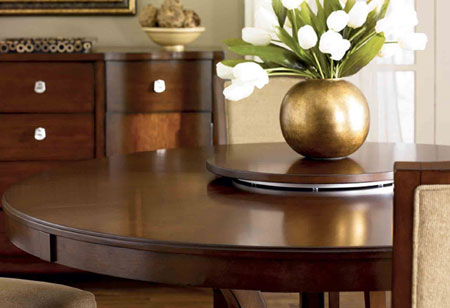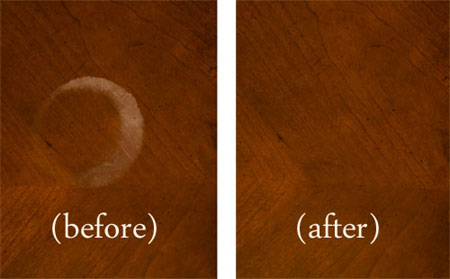Repair scratches in wood
The minor nicks, scuffs and hairline scratches that come with everyday wear and tear is one thing. Without them, an old piece looks devoid of character. But a water ring, an alcohol stain or a deep unsightly scratch is another matter. These types of blemishes can be relatively easy to repair without resorting to removing the finish.
YOU WILL NEED:
Mineral turpentine
Coarse and soft cloths
Woodoc steel wool
Woodoc Antique Wax
Liberon wax crayon
HERE'S HOW:
1. Dampen a coarse cloth with mineral turpentine and gently rub the cloth over the table in the direction of the grain to soften any protective surface layer of wax. Use a clean cloth to wipe off any residue. If your table has recesses or deep molding around the edges or along the legs, use a piece of steel wool dipped in mineral turpentine - or a soft toothbrush - to lightly wipe away wax buildup and grease in the crevices. Then clean off the surfaces again with the soft cloth and mineral turpentine.
2. Use a soft cloth with Woodoc Antique Wax and rub the dull, cleaned finish vigorously to buff out hairline scratches or white rings and revitalise the surface until it shines. Follow the instructions on the tin for a professional finish.
3. To fix a small scratch, use a Liberon wax crayon to fill in and blend the scratch. Let it dry for an hour, then buff away the excess wax colour with a soft cloth.
4. To repair deeper scratches, rub the edge of a wood-coloured wax stick that matches your table over the scratch until it is filled. Wipe off the excess and buff with a soft cloth. Use a compatible finish to fill in even deeper scratches.
5. Woodoc Antique Wax is applied and left to dry after which you can buff to a high shine. You may have to build up the polish locally to disguise rings or patches worn into the finish.


